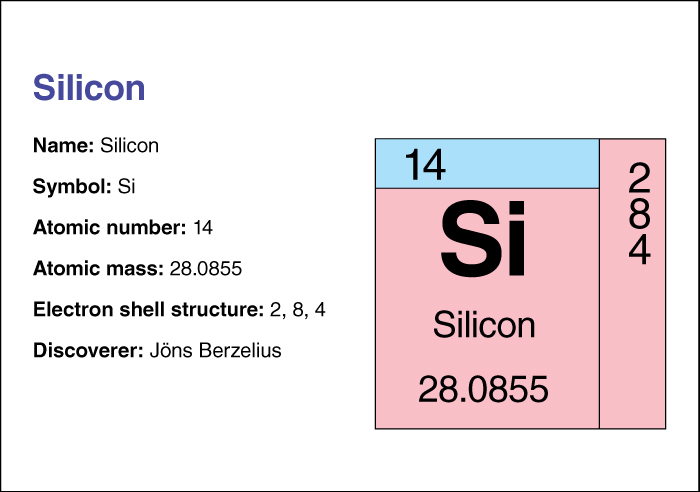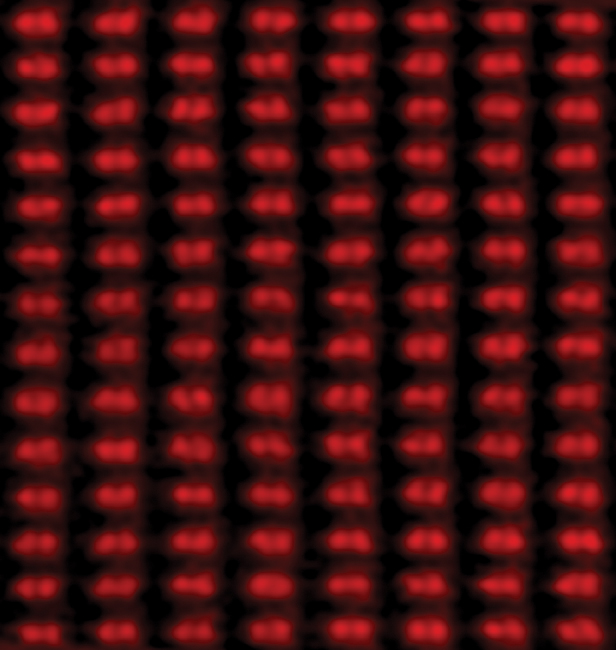Silicon, << SIHL uh kuhn, >> a chemical element, is a hard, dark gray metalloid that has a shiny luster. Silicon is a semiconductor, a material that conducts electric current better than an insulator like glass, but not as well as a conductor like copper.

Silicon’s atomic number (number of protons in its nucleus) is 14. Its relative atomic mass is 28.0855. An element’s relative atomic mass equals its mass (amount of matter) divided by 1/12 of the mass of an atom of carbon 12, the most abundant form of carbon. Silicon has a density of 2.33 grams per cubic centimeter. It melts at a temperature of 1410 °C and boils at 2355 °C. Its chemical symbol is Si. The Swedish chemist Jons J. Berzelius discovered silicon in 1823.
Chemists classify silicon as a metalloid . For information on the position of silicon on the periodic table, see the article Periodic table .

Silicon makes up about 28 percent of Earth’s crust. Only oxygen is more plentiful. In nature, silicon occurs primarily in silicon dioxide (SiO2), also known as silica, and in compounds known as silicates. A silicate contains (1) units of one silicon atom and four oxygen atoms (SiO4), and (2) one or more metallic elements.
Element, Chemical (table: Table of the elements)
SiO2 is the main ingredient of sand, quartz, agate, and glass. It is used in optical fibers, ceramic products, and the quartz crystals in electronic devices. Most rocks are mineral silicates. Silicates are the principal building material in the world in the form of cut stone, bricks, and concrete. Many gemstones are SiO2 or SiO4 minerals.
Silicon carbide (SiC), also known by the trade name Carborundum, is a compound with carbon that ranks as one of the hardest materials known. Manufacturers use it to grind and polish other materials. Silicones, synthetic compounds with carbon and oxygen, are used in synthetic rubber, water repellent coatings, nonstick surfaces, lubricants, electrical insulators, and sealants.
Silicon is the main substance in computer chips, solar cells, transistors, and other electronic devices. Extremely pure silicon is modified in two ways: (1) with small amounts of other elements to provide certain electrical properties, and (2) with oxygen to make insulating SiO2.
